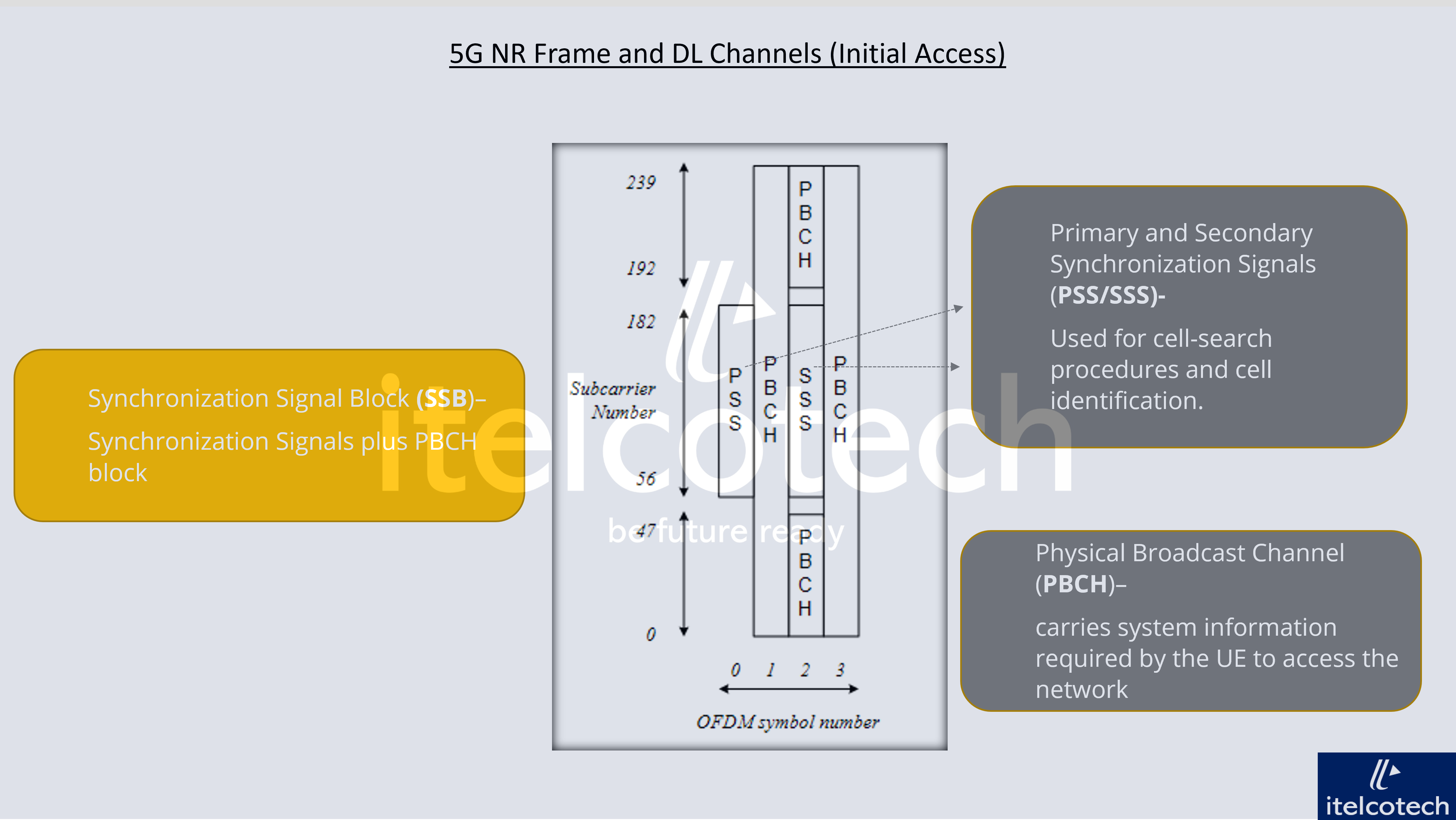
Synchronization Signal Block (SSB) in 5G
byRahul Kaundalon
Synchronization Signal Block (SSB) in 5G :–
The Synchronization Signal and PBCH block (SSB) consists of primary and secondary synchronization signals (PSS, SSS), each occupying 1 symbol and 127 subcarriers, and PBCH spanning across 3 OFDM symbols and 240 subcarriers, but on one symbol leaving an unused part in the middle for SSS as show in Figure.
• Physical Broadcast Channel (PBCH) :-
The PBCH carries part of the system information required by the UE to access the network. Together with the PSS and the SSS, it forms an SSB that is part of the initial access procedure. The PBCH contains its own DMRS.
• Primary and Secondary Synchronization Signals (PSS/SSS) :-
PSS and SSS are used for cell-search procedures and cell identification.
PSS and SSS together carry the PCI. PSS sends one of three orthogonal sequences and SSS sends one of 336 binary sequences. Therefore, there are 1008 unique PCIs.
🔗 To learn more about such topics, please refer to the comprehensive course on 5G. Link for the course is - https://www.itelcotech.com/learningpath/5g-architecture-design-protocols-evolution-and-deployment
